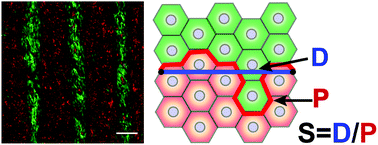Modulation of cellular polarization and migration by ephrin/Eph signal-mediated boundary formation†
Abstract
Compartment boundaries are essential for ensuring proper cell organization during embryo development and in adult tissues, yet the mechanisms underlying boundary establishment are not completely understood. A number of mechanisms, including (i) differential adhesion, (ii) differential tension, and (iii) cell signaling-mediated cell repulsion, are known to contribute and likely a context-dependent balance of each of these dictates boundary implementation. The ephrin/Eph signaling pathway is known to impact boundary formation in higher animals. In different contexts, ephrin/Eph signaling is known to modulate adhesive properties and migratory behavior of cells. Furthermore it has been proposed that ephrin/Eph signaling may modulate cellular tensile properties, leading to boundary implementation. It remains unclear however, whether, in different contexts, ephrin/Eph act through distinct dominant action modes (e.g. differential adhesion vs. cell repulsion), or whether ephrin/Eph signaling elicits multiple cellular changes simultaneously. Here, using micropatterning of cells over-expressing either EphB3 or ephrinB1, we assess the contribution of each these factors in one model. We show that in this system ephrinB1/EphB3-mediated boundaries are accompanied by modulation of tissue-level architecture and polarization of cell migration. These changes are associated with changes in cell shape and cytoskeletal organization also suggestive of altered cellular tension.



 Please wait while we load your content...
Please wait while we load your content...